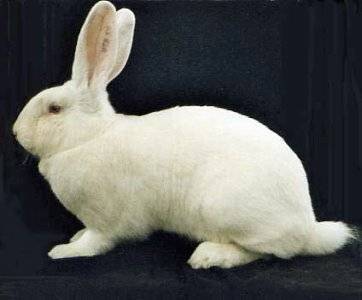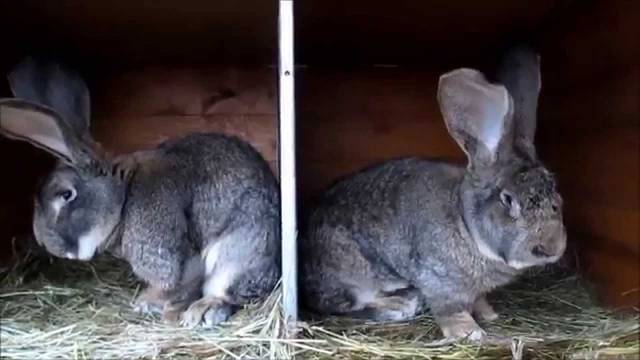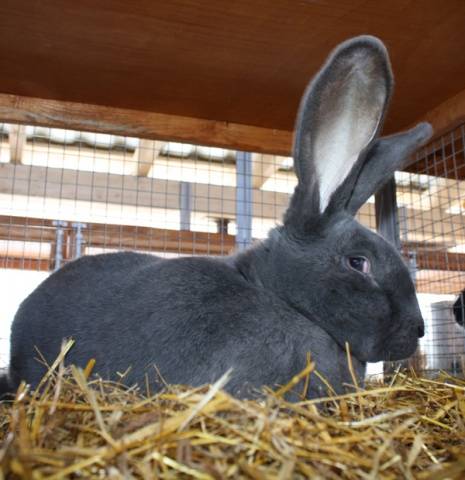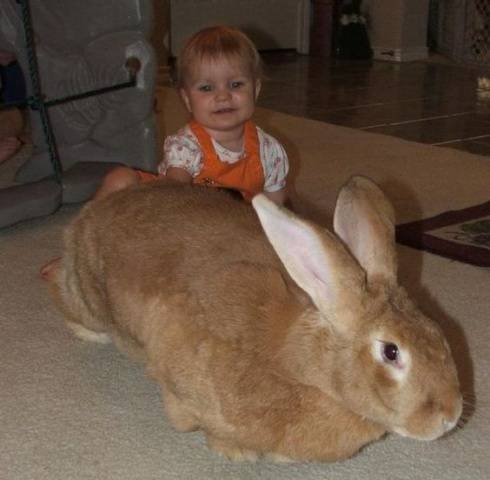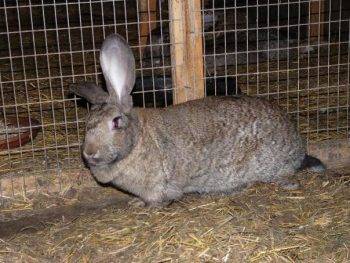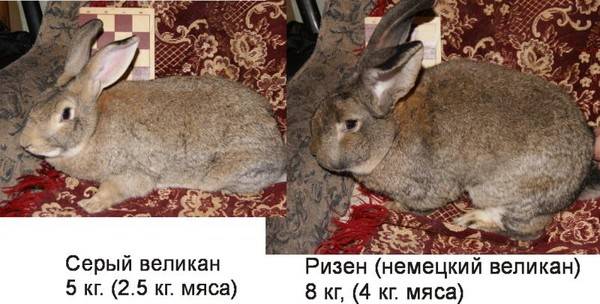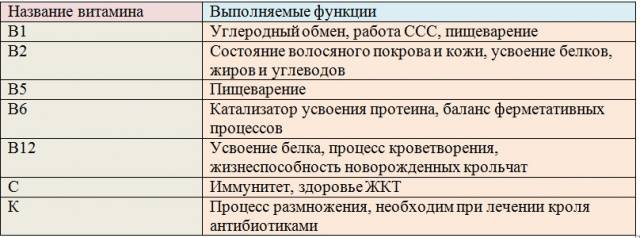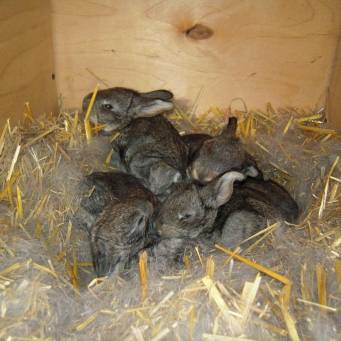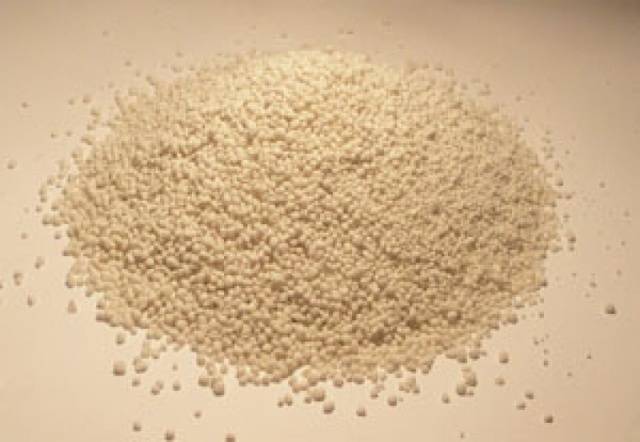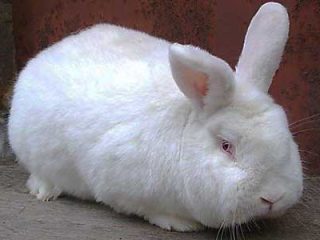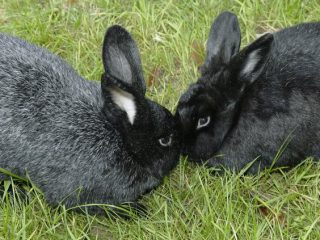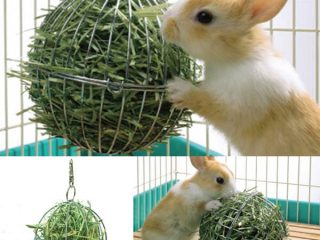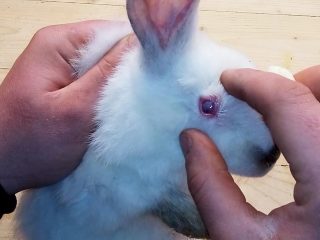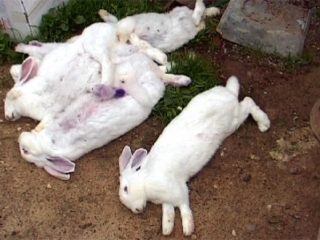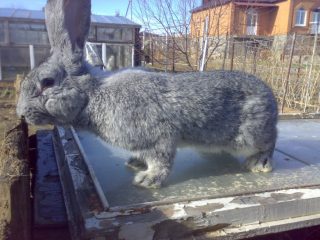Content
The German Riesen (German giant), considered today the largest rabbit, in a straight line comes from Belgian Flanders... After Flanders entered Germany in the 19th century, German breeders began breeding their own line of giants, focusing on weight gain. The Germans achieved their goal. Moreover, the result was so good that a new rabbit breed... If the blood of a different breed were added to the flanders, then there would be no controversy today. But the German Riesen is a pure Flanders rabbit by blood, which is why many breeders do not recognize the Riesen as a separate breed, considering the German Riesen a branch of the Flanders rabbit.
In fact, three large breeds of rabbits have now been bred in Germany: German Riesen, white giant and a butterfly.
The white giant is still the same Flanders rabbit, but smaller than its colored counterparts - the German giants, which is why the white rabbits were singled out as a separate breed.
Of these three breeds, the German Riesen is the largest, with an average weight of 7 kg. The white giant weighs half a kilogram less. And the smallest is a butterfly. Only 6 kg.
German Riesen standard
In rizena, a head proportional to the body with large cheeks (in males), in rabbits, the heads are more graceful and elongated. The ears should be at least 13 and no more than 20 cm long. The rizen's ears, which are narrower at the base and wider in the middle, resemble pins turned upside down.
Like any meat breed, the Risen has well-developed muscles. The body is massive with a wide back and deep chest. Rabbits differ in that the bulk of their muscle mass is located on their hind legs. Therefore, the sacral section of the rizen should be wide and powerful.
The forelegs are massive, set wide apart to support the weight of the body.
Smaller rabbits are culled for meat. The average body length of a rizen is 70-75 cm, weight is 7-8 kg. Breeders continue to work on the sizes of German rizenov and today rabbits weighing 9-10 kg are no longer a rarity. And the record holders can reach almost 12 kg. The current standard of the German Rabbit Breeders Association allows for an upper weight limit for German risenovs of 11.8 kg.
An attempt to raise a rabbit of record weight may result in a fat animal that is not capable of reproduction. In obese males, the inability to fertilize rabbits is observed, and in obese females, the number of cubs in the litter decreases. Often, an overweight rabbit herself dies when she is fled.
Riesen rabbits theoretically belong to meat-skin breeds. The length of their coat is 4 cm. Initially, the colors determined by the agouti genome prevailed among the German rizenos. That is, zone gray and zone red. White is a spontaneous mutation of genes responsible for color.
The nondescript "hare" color was the main obstacle to the use of this breed for the manufacture of fur products, although the large skin is of more interest to furriers than the skins of smaller rabbits. The situation was corrected when the blue and black Risen rabbits were bred.
"Standard" color.
In the video, rabbits of the German Riesen breed of a standard color
Blue color.
Black color.
The standard also allows a red color, which on Russian-language sites can be called "gold", using tracing paper from English. When searching for rizen by ad, it should be borne in mind that the exotic "gold" is just a ginger rabbit and its productive characteristics are no different from other rabbits of this breed with wool of a different color.
The calm and docile disposition of German rizenov allows them to be kept as pets.
Features of the content of German rizen
This breed of rabbits is not very adapted to the Russian climate, therefore, rizenes require either insulated cages when kept outdoors, or placing cages in a building with a controlled microclimate.
Giants also need a cage area one and a half times larger than usual. And for a rabbit with a brood twice as much. The height of the cage should be at least 60 cm with the cage content of German rizenes.
But such a content is suitable for rabbits fed for meat, and is not very convenient for keeping a breeding stock.
It is better to keep the breeding flock in individual enclosures with a floor area of 1 - 1.5 m².
With shed content, bedding for rabbits is usually not provided, except for queen cells. But rizenes too often get so-called "corns" - pododermatitis due to their high weight, damaging the feet of the paws on the floor grate. Therefore, for giants, the presence of hay bedding in a cage is a prerequisite for the correct maintenance of this breed of rabbits. But then the function of the lattice is lost, through which the rabbit droppings fall out of the cage to the outside.
You can make a special retractable tray on which the bedding will lie and which can be removed from the cage. But this will require alteration of ordinary cells for rizenov.
For this reason, it is often convenient to just keep the giants in the enclosure, where it is enough to remove the rabbit from its premises, and then remove all the dirty litter with a shovel.
If you put sawdust under the hay, then the rabbits will sit on dry hay, since urine will be absorbed into the sawdust lying under the hay. It is necessary to clean such enclosures as needed, but also do not delay with this procedure, since otherwise the rabbit will trample the droppings of the droppings and will live on manure, as in the photo, and this adversely affects the condition of the fur and skin on the animal's paws.
After removing the litter, the cage must be disinfected.
Feeding features
Risens eat the same food as other breeds of rabbits, but it should be borne in mind that all feeding rates in the tables are based on rabbits weighing 4-5 kg. For rizena, the feed rate increases in proportion to its weight.
Ideally, it would be rational to use full-scale factory feed for rabbits for rizenov, since these feeds are balanced in vitamins and minerals, plus they do not cause bloating, which can be obtained by feeding rabbits with juicy feed from the garden. The disadvantage of these feeds is that very few people produce them in Russia, except for imported feed for decorative rabbits in pet stores.
Therefore, when breeding rabbits for meat, you have to either make compound feed for them yourself, or feed them with grain. In addition to hay and grain feed, rabbits can be fed succulent feed. But it is juicy feed that causes digestive problems in rabbits, so feed them carefully.
When self-composing a diet, it is difficult to balance it in terms of vitamins and minerals. But you need to know that most of the vitamins are produced in the intestines of the rabbit by bacteria living there, therefore, in the absence of dysbiosis, the rabbit almost does not need vitamins.
The table shows the vitamins that are produced in the intestines of the rabbit.
In the case of dysbiosis, for example, with a course of antibiotics, these vitamins must be added artificially and as soon as possible to restore the microflora in the rabbit's intestines.
Three vitamins are not produced, being necessary at the same time: A, D, E.
Vitamin A responsible for the regulation of the reproductive and nervous systems, as well as for physical development. Able to accumulate in the liver. Symptoms of hypervitaminosis are similar to those of poisoning. Contrary to the belief that red vegetables contain the most vitamin A, fresh nettle contains more vitamin A than carrots.
Vitamin E is necessary for the development of muscle mass, the reproductive system and the normal functioning of the CVS.
Vitamin D prevents the development of rickets and promotes proper bone development. But it must be borne in mind that vitamin D hypervitaminosis causes calcium deposition on the walls of blood vessels.
Even with an increase in the ration, the proportions of feed for rizen rabbits remain the same as for other breeds. In winter, hay is at least 15%. You can give hay up to 25%. Concentrates from 40 to 60%. Juicy feed from 20 to 35%. In the summer, hay is often harvested, leaving grass, which is usually classified as succulent or green forage. In this case, herbs give from 35 to 60% and concentrates from 40 to 65%. The maximum values for concentrates are usually given to fattening rabbits.
Breeding
German rizen is a late-ripening rabbit. If meat breeds can be mated as early as 5 months, then with rizen you will have to wait up to 8-9 months. Due to the late maturity of the giants these days, they are giving way to the early maturing broiler breeds of rabbits. The rabbit brings on average as many cubs as smaller breeds. At the same time, young females have few litters, to the point that they can give birth to only one rabbit.
5-6 rabbits are allocated for one male. With a larger number of females, a decrease in fertility is possible.
After mating, the rabbits are transferred to a reinforced diet. If there is a lack of minerals, animal feed is added to the feed, as well as chalk and feed phosphates. In winter, tricalcium phosphate must be present in the diet, 5 g per head per day.
How to choose a breeding rabbit
For breeding for the tribe, you need to buy young animals from spring litters. The rabbits born in the spring had the opportunity to receive the maximum of vitamins and nutrients. Although some believe that winter droppings are stronger and better suited for breeding, although animals from these droppings grow smaller than their spring and summer counterparts.
It is best to take 4 month old rabbits from a reputable breeding farm.
When choosing a bunny, you need to take a closer look at its behavior and appearance. Although, according to the description of the breed, the rizena are very calm animals, nevertheless, a too immobile rabbit should alert. If at the same time the animal is trying to hide under the wall or hiding in a corner, it is better, in general, not to take rabbits from this litter.
When viewed externally, the bunny should be "smooth", in the sense that bones should not stick out under the skin. If the owner claims that the animal is thin because it grows, it is better to buy a breeding stock in another farm. But the bunny should not be too fat either.
The hair of a healthy animal is evenly lying on the body and usually causes the desire to pet. Disheveledness indicates a health problem. The eyes should be clean and shiny, no nasal discharge.
If there is sticky hair on the paws, it means that the rabbit was cleaning its eyes or nose with its paws. You should not buy such an animal.
An even wide back and straight powerful paws indicate the absence of rickets. Rabbits should also have a wide croup.
It is also worth looking into the mouth. It is better not to buy a bunny with an irregular bite. Such an animal will soon begin to have problems with its teeth and, as a result, with eating and assimilating food.
Reviews of the owners of German giants
Let's summarize
German rizeni are well suited for breeding in the southern regions of Russia, where winters are similar to European ones. In colder regions, an insulated rabbitry will have to be built for rabbits of this breed.
